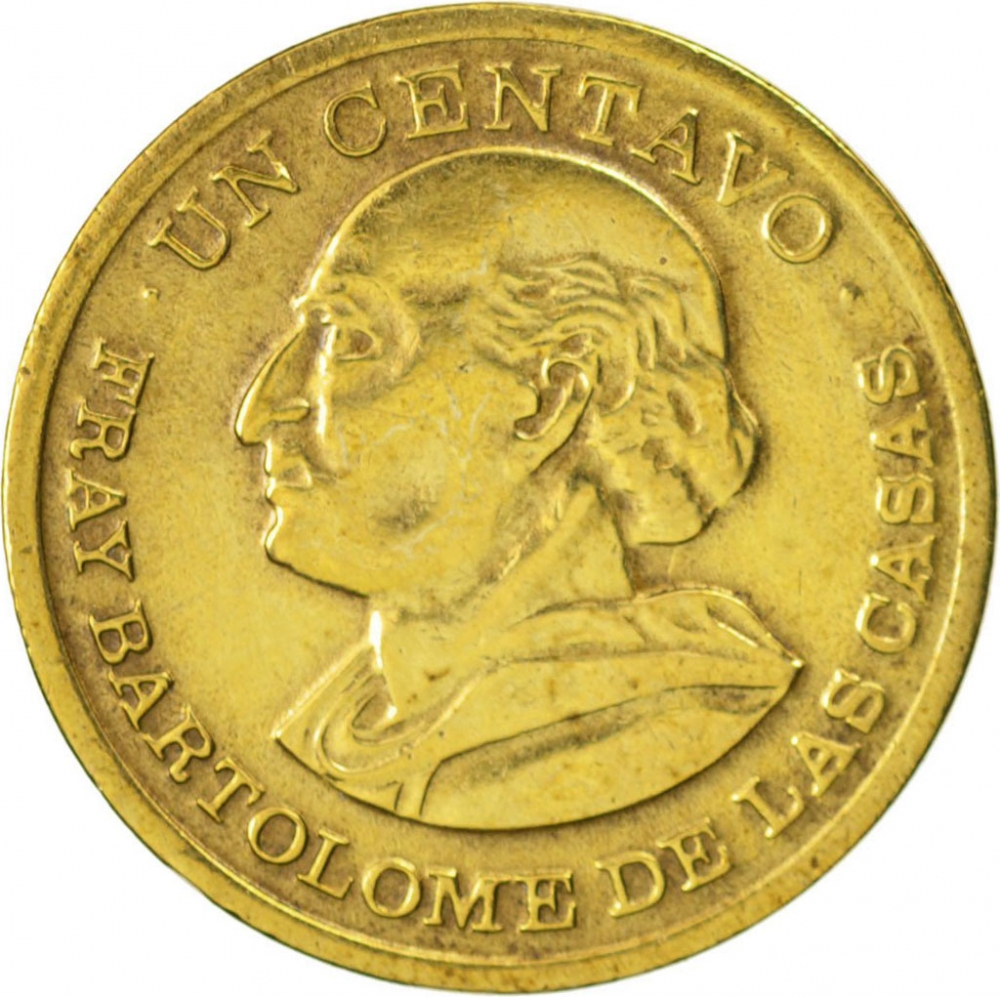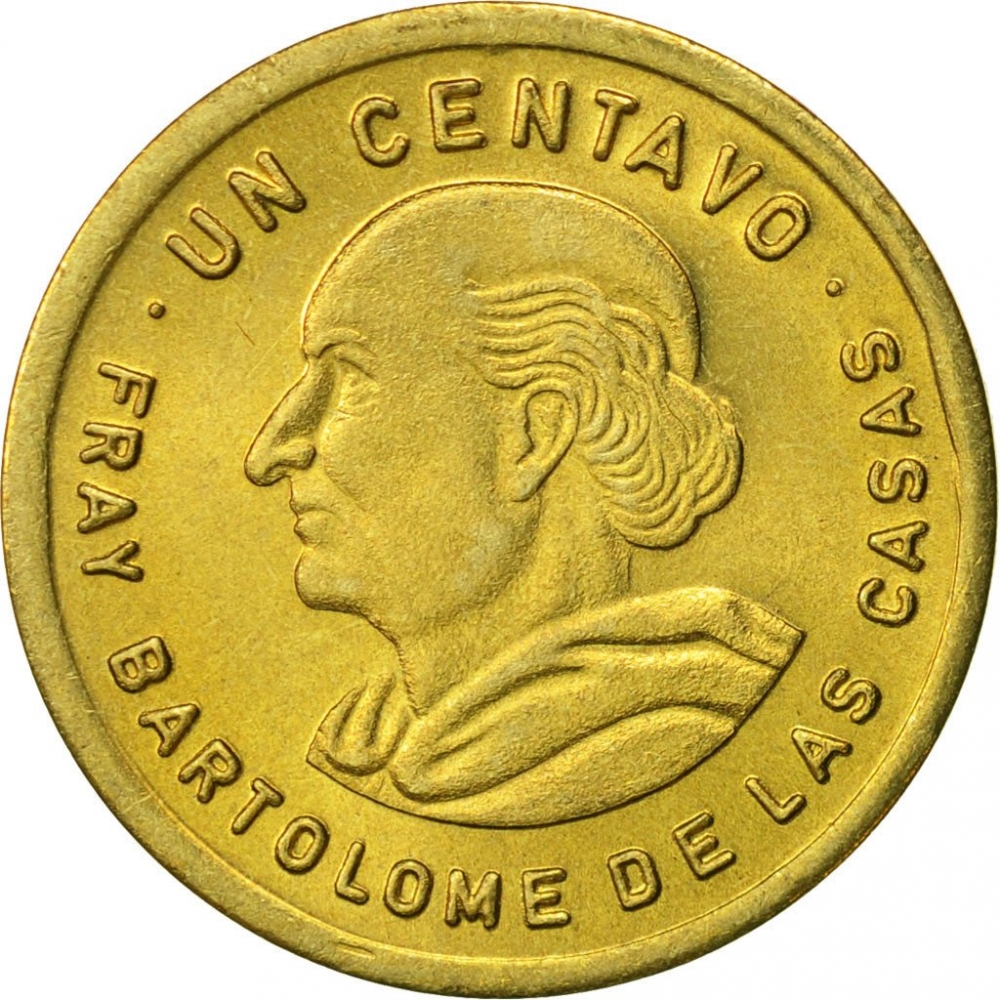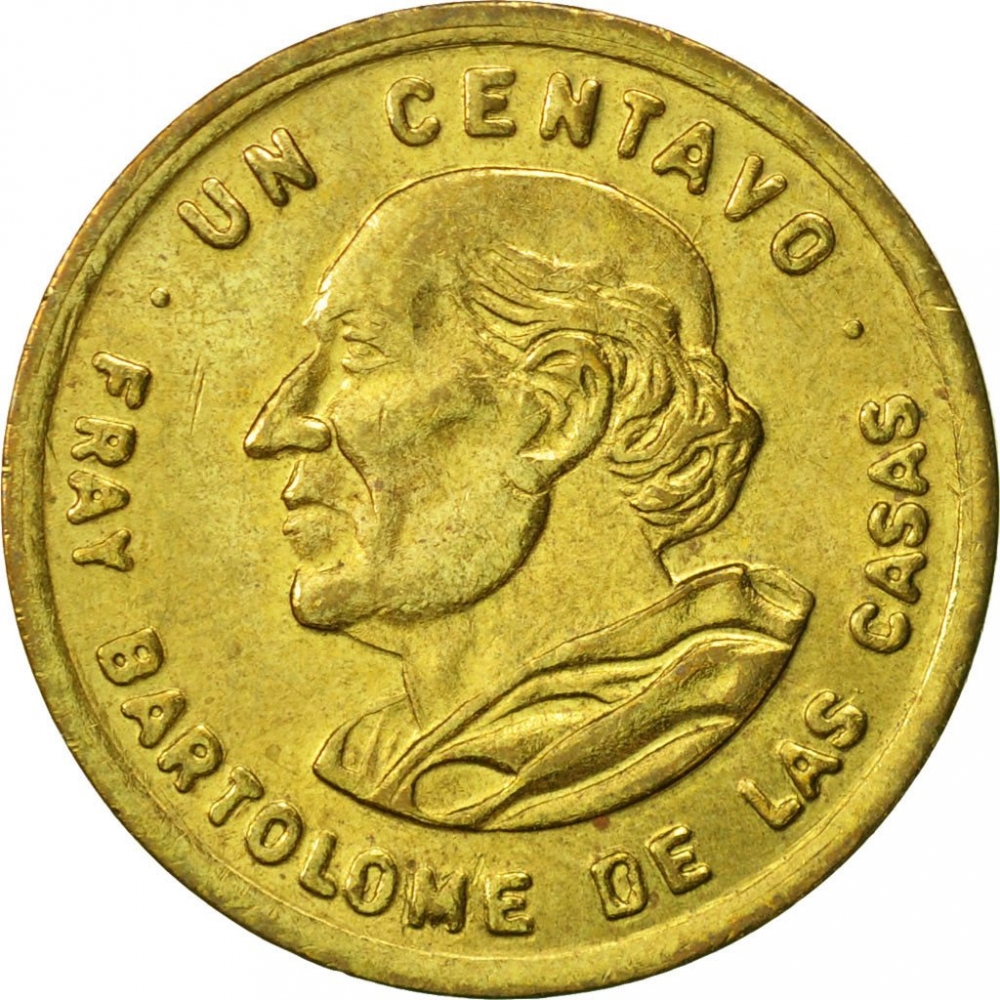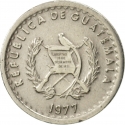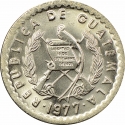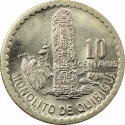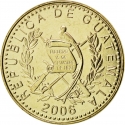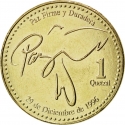Description
KM# 275.1 - Large letters obverse
KM# 275.2 - Smaller lettering and head
KM# 275.3 - Smaller letters
KM# 275.4 - Legend on scroll in relief
KM# 275.5 - New portrait
Obverse

|
Emblem of Guatemala, with legend at top, and date at bottom.
The Emblem of Guatemala depicts two rifles and two swords crossed with a wreath of laurel. The middle will harbor a scroll of parchment with the words "Liberty 15 of September of 1821" and in the upper part a Quetzal as the symbol of national independence and autonomy. 15 September 1821 is the date of Central America's independence from Spain.
The resplendent quetzal is the national bird of Guatemala, and its image is found on the country's flag and coat of arms. It also lends its name to the country's currency, the Guatemalan quetzal (abbreviation GTQ).
REPUBLICA DE GUATEMALA
LIBERTAD
15 DE
SEPTIEMBRE
DE 1821
1979
|
Reverse

|
Denomination at top. Bust of Bartolomé de las Casas left with legend at bottom.
Bartolomé de las Casas (c. 1484 – 1566) was a 16th-century Spanish historian, social reformer and Dominican friar. He became the first resident Bishop of Chiapas, and the first officially appointed "Protector of the Indians". His extensive writings, the most famous being A Short Account of the Destruction of the Indies and Historia de Las Indias, chronicle the first decades of colonization of the West Indies and focus particularly on the atrocities committed by the colonizers against the indigenous peoples.
Bartolomé de las Casas spent 50 years of his life actively fighting slavery and the violent colonial abuse of indigenous peoples, especially by trying to convince the Spanish court to adopt a more humane policy of colonization. Unlike the other priests who sought to destroy all of the indigenous peoples native books and writings, he was strictly opposed to this action. Although he failed to save the indigenous peoples of the Western Indies, his efforts resulted in several improvements in the legal status of the natives, and in an increased colonial focus on the ethics of colonialism. Las Casas is often seen as one of the first advocates for universal conception of human dignity (later human rights).
UN CENTAVO
FRAY BARTOLOME DE LAS CASAS
|
| Edge |
|
Characteristics
| Material |
Brass |
| Weight |
2.5 g |
| Diameter |
19 mm |
| Thickness |
1.36 mm |
| Shape |
 round
round
|
| Alignment |
Coin
|
| Alt # |
KM# 275.1, KM# 275.2, KM# 275.3, KM# 275.4, KM# 275.5
|
Related coins
Non-magnetic
Copper Nickel Zinc, 1.6 g, ⌀ 16 mm
My Collection
My Exchange
Non-magnetic
Copper Nickel Zinc, 3.2 g, ⌀ 21 mm
My Collection
My Exchange
Nickel Brass, 11 g, ⌀ 29 mm
My Collection
My Exchange
|



